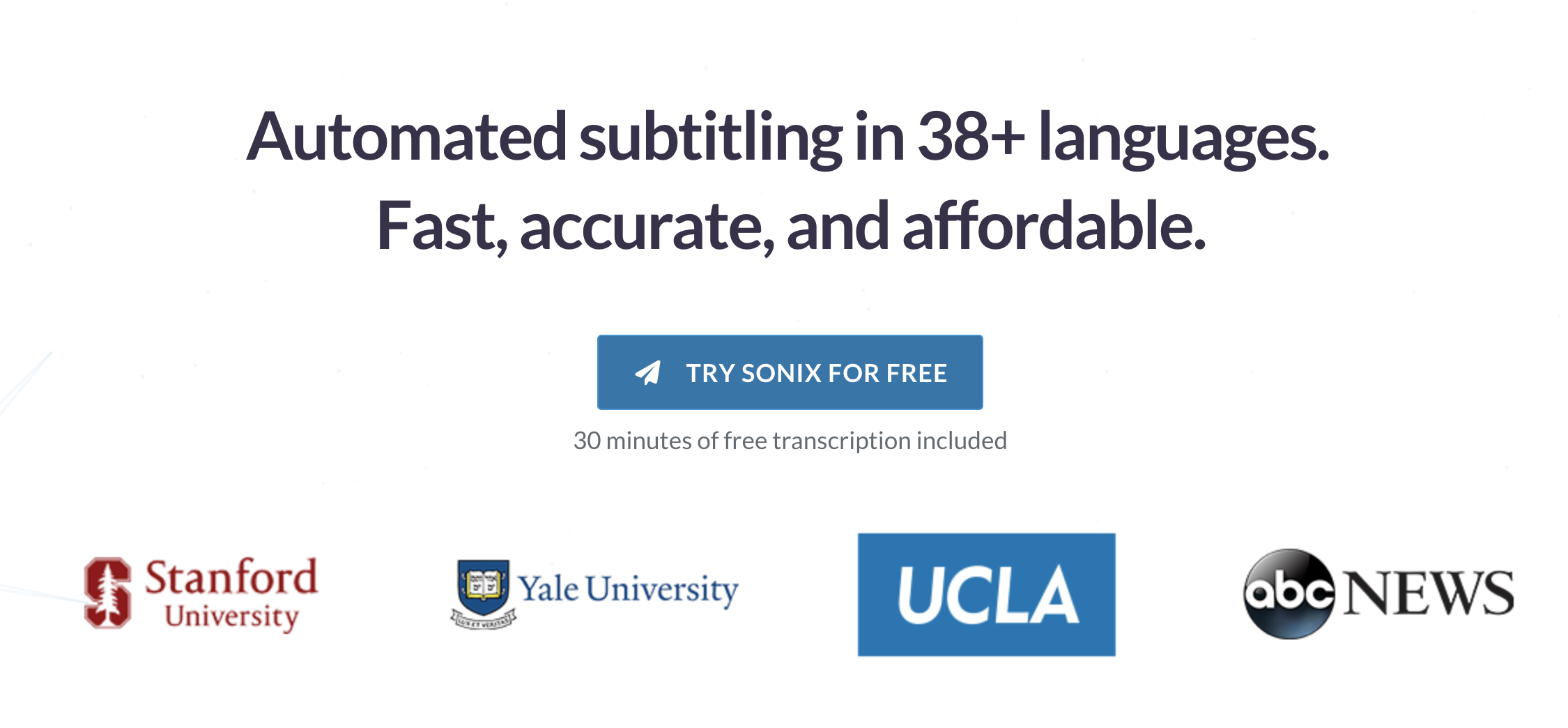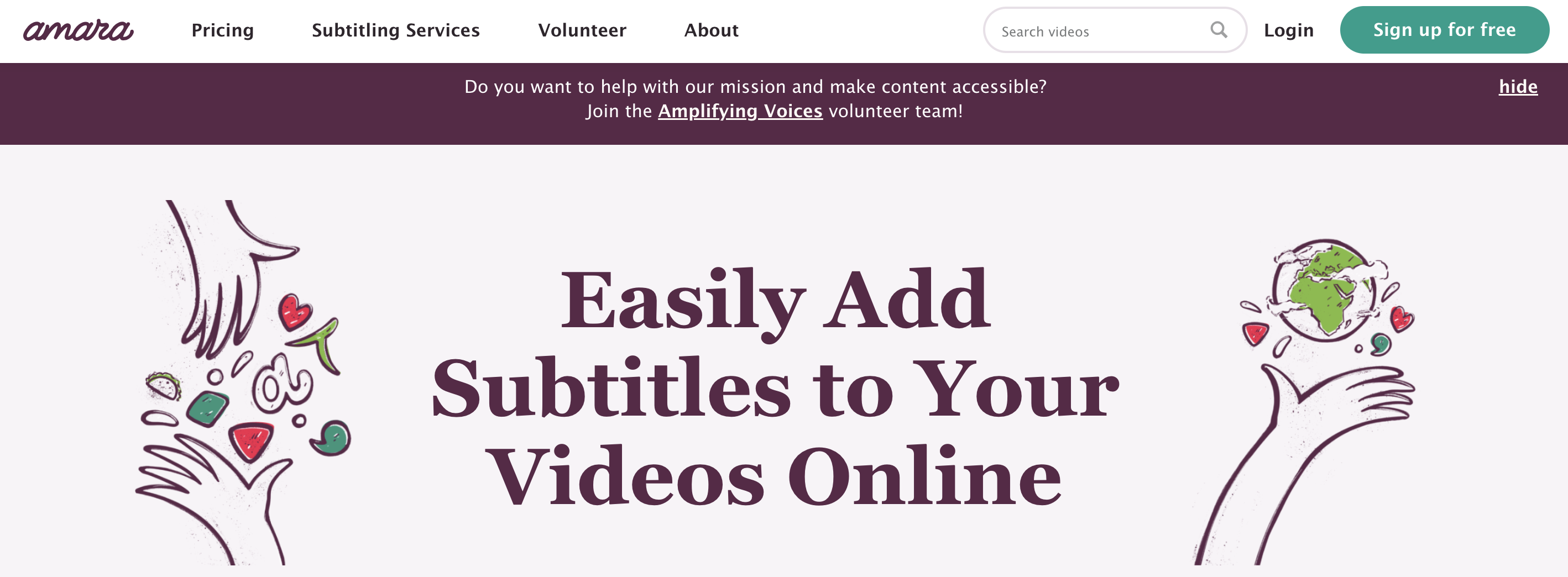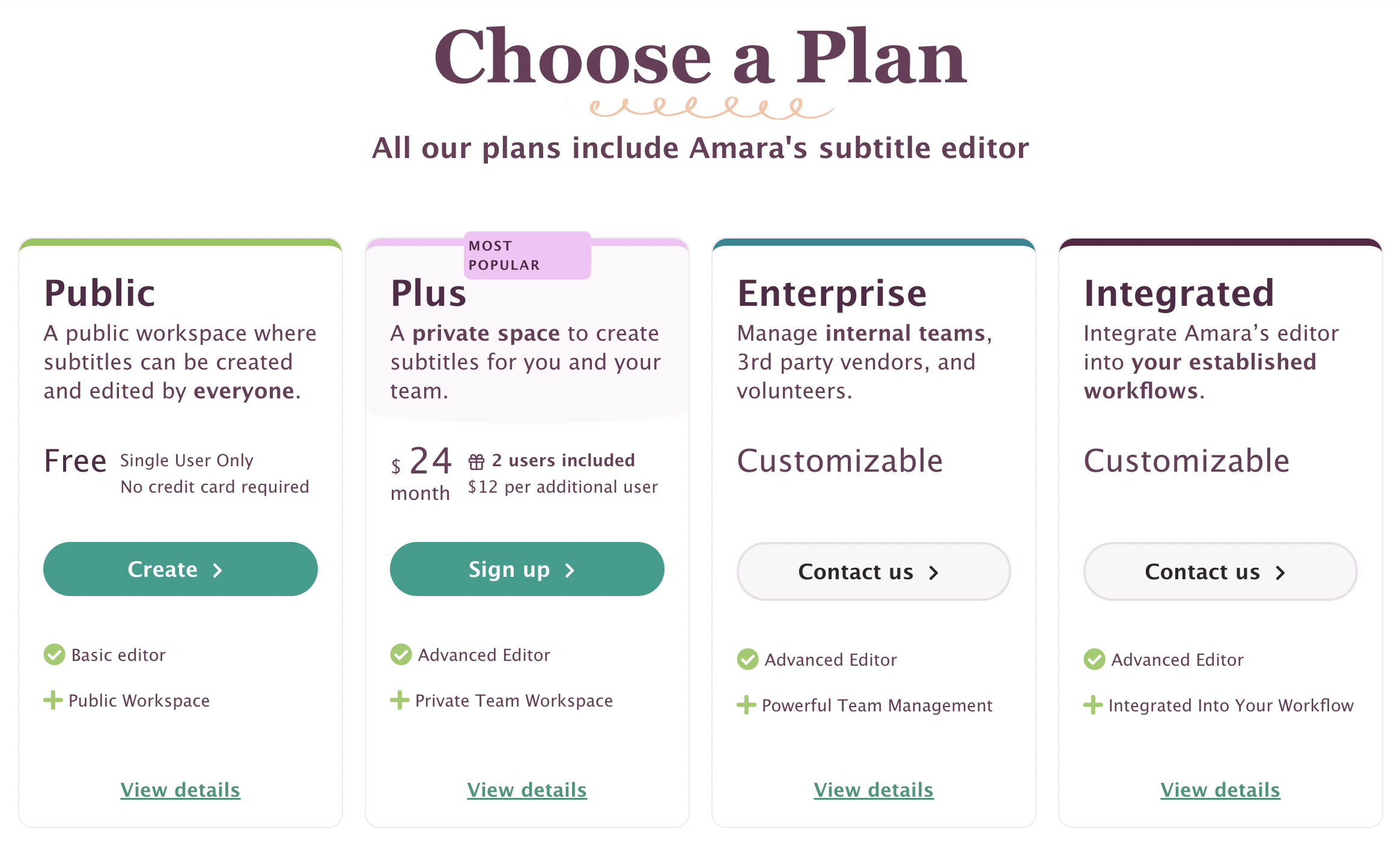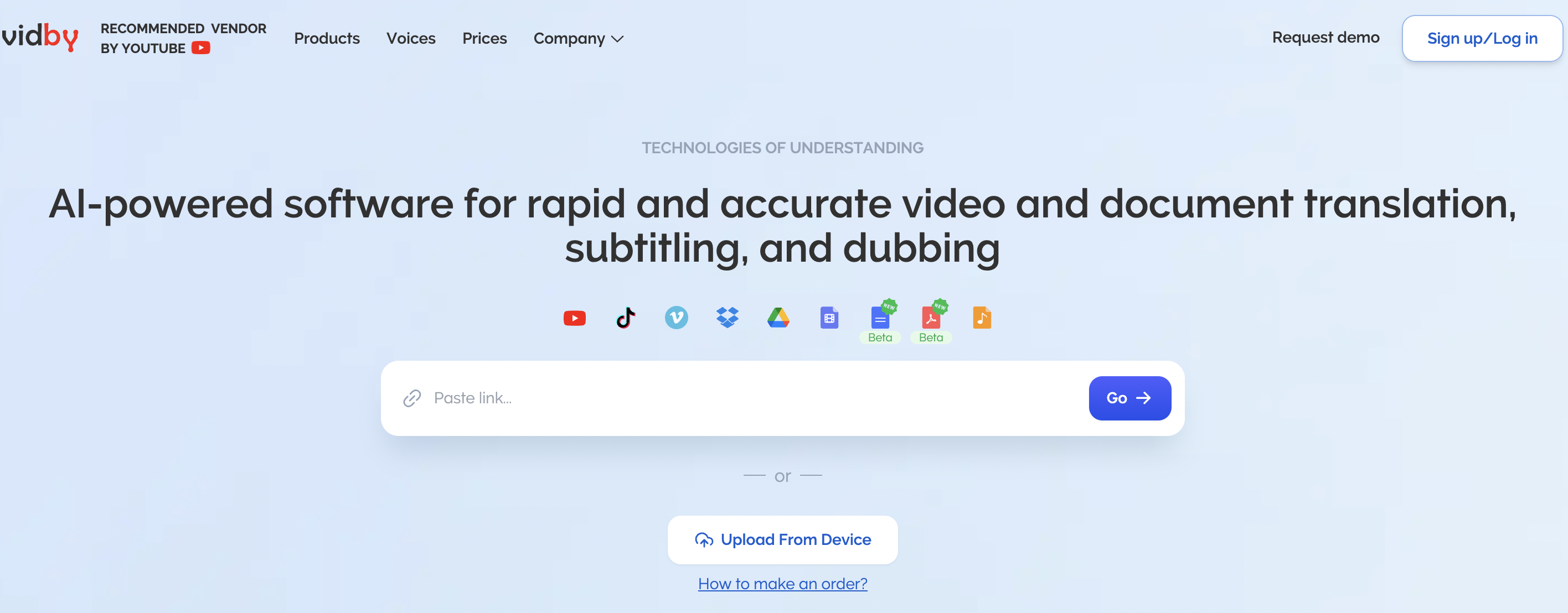The Interplay Between Web Design and Video Translation
Video translation can significantly impact website design because it allows businesses to reach a wider audience by providing language accessibility to their online content. This is particularly important in today's globally connected world where there is a growing need for multilingual content, especially when it comes to video content such as marketing videos, product demos, and customer testimonials.
This article explores the reasons behind the growing relevance of video translation, the various types of video translation, and how these elements intersect with modern web design practices.
In today's article we will go over why the interplay between web design and video translation matters, how to integrate video translation into web design, different types of video translation and why they are significant, and future trends/implications.
Click on each corresponding link to jump ahead:
- Video Translation and Web Design - Why Does it Matter?
- Integrating Video Translation Into Web Design
- Types of Video Translation and Their Significance
- Video Translation and Web Design - Future Trends
If you have any questions regarding web design and video translation, contact us.
1. Video Translation and Web Design - Why Does it Matter?
Video translation is a powerful tool that can greatly benefit websites that target an international audience. Here are some reasons why video translation is important for web design:
- Global reach: Websites that feature video content can now reach a much larger global audience. With video translation, visitors from different parts of the world can understand and engage with the content, regardless of their native language.
- Improved search engine optimization (SEO): Google prioritizes websites that provide valuable and relevant content to users. By offering video content in multiple languages, websites can attract a wider range of users and improve their search engine rankings.
- Better User Experience (UI): When visitors can watch videos in their own language, they are more likely to feel engaged and satisfied with the website. This can lead to higher levels of user satisfaction and loyalty.
- Cost savings: Instead of producing separate video content for each language, websites can save money by investing in video translation software. This approach can also reduce the time and effort required to produce and manage multiple versions of the same video.
- Competitive advantage: Offering video content in multiple languages can give websites a competitive edge over their competitors. It demonstrates a commitment to serving a global audience and provides a unique value proposition that sets the website apart from others.
English has long been considered the lingua franca of the internet, with a significant portion of online content being in English. However, the online population is incredibly diverse, with users from different linguistic backgrounds seeking information and entertainment in their native languages. This is particularly relevant in regions where Arabic, Persian, Greek or Chinese is the predominant language, such as the Middle East, North Africa and Asia. As a result, there's a rising need for content, especially video content, to be translated from English to Arabic, Persian, Greek or Chinese.
Video content has become a dominant medium for information sharing, entertainment, and marketing. The integration of video translation into web design can vastly improve user experience, broaden the audience reach, and enhance engagement. When English-to-Arabic video translation or English-to-Persian, Greek or Chinese is seamlessly integrated into the design of websites and platforms, it ensures that foreign-speaking audiences can access and understand the content effectively, contributing to a more inclusive online experience.
2. Integrating Video Translation Into Web Design
The integration of video translation into web design requires careful consideration of various elements, including user interface, user experience, and cultural sensitivity. To incorporate video translation into your web design, you can follow these steps:
- Choose a video translation platform: There are several platforms available that offer video translation services, such as YouTube Auto-Translate and Amara. Research the features and pricing of each platform to determine which one best fits your needs.
- Upload your video content: Once you have chosen a platform, upload your video content to the site. Be sure to select the appropriate language option for your video, as well as any desired subtitle or caption options.
- Allow for automatic translation: Many video translation platforms allow for automatic translation of your video content. This means that viewers can choose to watch the video in their preferred language, and the platform will automatically generate subtitles or captions in that language.
- Review and edit the translation: After the video has been uploaded and translated, review the translation to ensure that it is accurate and meets your standards. If necessary, you can edit the translation to improve its accuracy and clarity.
- Promote your translated video content: Finally, promote your translated video content through social media channels, email marketing campaigns, and other online channels. Encourage visitors to watch the video in their preferred language, and provide links to the translated version if needed.
By following these steps, you can successfully integrate video translation into your web design and provide a better user experience for your global audience.
Furthermore, consider the following practices for creating a seamless experience for non-english speaking users:
- User-centric design: Incorporate video translation options that are easily accessible and intuitive to use. Users should have the ability to select their preferred language or subtitle options effortlessly.
- Responsive design: Ensure that the translated video content is compatible with different devices and screen sizes. A responsive design approach guarantees a consistent viewing experience across platforms.
- Cultural context: Consider cultural nuances and sensitivities when translating video content. What works in one culture may not necessarily resonate in another, and the design should accommodate these differences.
- Load times and bandwidth: Optimize video files for fast loading times, especially in regions with varying internet connectivity speeds. Compressed files can help deliver a smooth viewing experience.
- Testing and feedback: Prior to launching the translated content, conduct user testing and gather feedback to identify any issues or improvements that need to be addressed.
It is important that you follow these practices in order to get the most out of your video translation for web design.
3. Types of Video Translation and Their Significance
There are several approaches to translating video content, each catering to different goals and requirements. Some of the most common types of video translation include:
- Dubbing: Dubbing involves replacing the original audio of a video with a new audio track in the target language, while keeping the original video visuals intact. This method is commonly used in movies, TV shows, and documentaries where an immersive experience is crucial. Dubbing allows viewers to hear the dialogue in their native language, which can enhance their understanding and emotional connection to the content. It's particularly useful when lip synchronization is important, as it ensures that the characters' lip movements match the spoken language. However, dubbing might not be suitable for all types of videos, as it can alter the original performances and the tone of the audio.
- Subtitling: Subtitling involves displaying translated text at the bottom of the screen while the original audio remains unchanged. This method is effective for retaining the authenticity of the original performances and audio while making the content accessible to a broader audience. Subtitles are especially beneficial for web design because they don't require altering the video's audio track or visuals. They are also versatile and can be easily turned on or off by viewers, making them suitable for user preferences. Subtitling is commonly used for shorter videos, as reading subtitles while watching can be challenging for longer content.
- Voiceover: Voiceover involves replacing the original audio with a new voice recording in the target language while allowing the original video audio to remain faintly audible in the background. This method is often used for educational videos, corporate presentations, and documentaries. Voiceovers are beneficial when visuals are important to understand the content, and the viewer needs to hear the translated narration. They provide a compromise between dubbing and subtitling, preserving some of the original audio while introducing the translated content.
- Transcription and translation: This approach involves transcribing the original English audio into written text and then translating that text into the target language. The translated content can be presented as subtitles, closed captions, or translated scripts. This method is particularly valuable for web accessibility, as it allows viewers who are deaf or hard of hearing to access the content. Additionally, providing translated scripts can benefit users who prefer reading along or have cognitive disabilities. This method doesn't alter the original audio or visuals, making it suitable for maintaining the creator's intended experience.
Each type of video translation has its strengths and limitations, and the choice of method depends on factors such as the nature of the content, the target audience, and the desired user experience. For web design, it's essential to consider factors like page load times, user preferences, and the overall design aesthetics while integrating translated video content. Ultimately, the goal is to provide an inclusive and user-friendly experience for all visitors, regardless of their language proficiency.
4. Video Translation and Web Design - Future Trends
Video translation has the potential to significantly impact web design in the future in several ways:
- Global reach and accessibility: Video translation allows websites to reach a global audience by making content accessible to people who speak different languages. This can lead to increased user engagement and broader reach for businesses and organizations.
- User experience: Web designers will need to consider how video content is presented and navigated in different languages. This might involve designing intuitive user interfaces for selecting preferred languages, subtitles, or dubbing options.
- Design consistency: Translating videos involves more than just translating spoken content; it also includes ensuring that graphics, text overlays, and other visual elements are consistent across languages. Web designers will need to ensure that translated videos maintain a cohesive and visually appealing design.
- Multilingual SEO: Video translation can boost a website's visibility on search engines in various languages. Designers will need to work closely with SEO experts to optimize video content for relevant keywords and phrases in different languages.
- Localization: Beyond translation, videos might need to be localized to suit the cultural preferences and sensibilities of different regions. This could involve adapting imagery, colors, and even the overall tone of the video to resonate with local audiences.
- Responsive design: Video translation could lead to varying video lengths due to differences in spoken language pacing. Web designers may need to consider responsive design principles to accommodate videos of different durations without disrupting the overall page layout.
- Technical considerations: Implementing video translation might involve technical challenges, such as integrating subtitle or dubbing tracks, ensuring proper synchronization, and maintaining video quality across different languages and devices.
- Bandwidth and loading times: Videos are data-heavy and can impact loading times, especially when multiple language versions are available. Designers will need to optimize video delivery to ensure that users across the world experience acceptable loading speeds.
- Interactive translations: Advanced technology could enable real-time translation of video content as users watch, allowing them to select their preferred language. Designers will need to create interfaces that facilitate this interactive translation experience.
- Accessibility: Alongside translation, designers will need to consider accessibility features such as closed captions, subtitles, and audio descriptions to ensure that videos are usable by individuals with disabilities.
Incorporating video translation into web design will require a combination of technical, design, and user experience considerations. As technology advances, tools and platforms for seamless video translation will likely become more prevalent, shaping the way designers approach creating multilingual and globally accessible web experiences.
English to Arabic video translation and other languages hold immense potential for bridging linguistic and cultural gaps on the internet. It enhances accessibility and inclusivity, enabling a wider audience to benefit from the content. As technology continues to advance, we can expect to see innovations in real-time translation services, AI-driven voiceovers, and even more accurate subtitling techniques.
Several research studies have shown the positive impact of video translation on user engagement and retention rates. According to a study conducted by Common Sense Advisory, companies that incorporate multilingual video content are more likely to experience an increase in conversion rates and brand loyalty among non-English-speaking customers. This underscores the practical significance of investing in high-quality English to Arabic video translation and other languages.
In conclusion, the synergy between web design and video translation is a dynamic and essential facet of modern digital communication. It not only caters to the diverse linguistic landscape of online audiences but also elevates the user experience, fosters cross-cultural understanding, and opens up new avenues for global collaboration.




